
The Enigmatic Komodo National Park
Discover the wild beauty of Komodo National Park, home to the legendary Komodo dragons, stunning landscapes, and vibrant marine life.
Komodo National Park is a mesmerizing paradise located in Indonesia's Lesser Sunda Islands. Famous for its resident Komodo dragons, the largest lizards on Earth, this UNESCO World Heritage site offers an unparalleled blend of adventure and natural beauty. The park comprises three major islands: Komodo, Rinca, and Padar, each offering unique landscapes and opportunities for exploration. The rugged hills and savannahs contrast beautifully with the pristine beaches and turquoise waters, making it a haven for photographers and nature lovers alike. Snorkeling and diving in the park's marine areas reveal a vibrant underwater world teeming with colorful coral reefs, manta rays, and diverse marine life. For those preferring land-based activities, guided treks provide a chance to encounter Komodo dragons in their natural habitat, as well as other wildlife like buffalo, deer, and various bird species. Komodo National Park is not just about its wildlife; it also offers a glimpse into the local culture. The nearby fishing villages provide a warm welcome to visitors, allowing for an immersive experience into the daily lives and traditions of the local communities.
Local tips in Komodo National Park
- Visit during the dry season (April to December) for the best weather and optimal wildlife viewing experiences.
- Hire a local guide to enhance your trekking experience and ensure your safety, especially when observing the Komodo dragons.
- Bring plenty of water and sunscreen, as the park's climate can be very hot and dry.
- Respect local customs and traditions when visiting nearby villages; dress modestly and ask for permission before taking photographs.
- Book diving and snorkeling tours in advance, as these activities are very popular and spots can fill up quickly.
The Enigmatic Komodo National Park
Komodo National Park is a mesmerizing paradise located in Indonesia's Lesser Sunda Islands. Famous for its resident Komodo dragons, the largest lizards on Earth, this UNESCO World Heritage site offers an unparalleled blend of adventure and natural beauty. The park comprises three major islands: Komodo, Rinca, and Padar, each offering unique landscapes and opportunities for exploration. The rugged hills and savannahs contrast beautifully with the pristine beaches and turquoise waters, making it a haven for photographers and nature lovers alike. Snorkeling and diving in the park's marine areas reveal a vibrant underwater world teeming with colorful coral reefs, manta rays, and diverse marine life. For those preferring land-based activities, guided treks provide a chance to encounter Komodo dragons in their natural habitat, as well as other wildlife like buffalo, deer, and various bird species. Komodo National Park is not just about its wildlife; it also offers a glimpse into the local culture. The nearby fishing villages provide a warm welcome to visitors, allowing for an immersive experience into the daily lives and traditions of the local communities.
When is the best time to go to Komodo National Park?
Iconic landmarks you can’t miss
AYANA Komodo Waecicu Beach
Experience luxury and nature at AYANA Komodo Waecicu Beach, where breathtaking views and adventure await in Labuan Bajo, Indonesia.

Pink Beach
Experience the stunning beauty of Pink Beach in East Nusa Tenggara, where pink sands meet crystal-clear waters for an unforgettable getaway.

Loh Buaya Komodo National Park
Experience the breathtaking landscapes and unique wildlife of Loh Buaya in Komodo National Park, a UNESCO World Heritage site in Indonesia.

Mirror Stone Cave
Explore the mesmerizing Mirror Stone Cave in Labuan Bajo, a natural wonder showcasing stunning rock formations and tranquil surroundings.

MUSEUM KOMODO - JAGAT SATWA NUSANTARA
Explore the unique biodiversity of Indonesia at Museum Komodo - Jagat Satwa Nusantara, where the wonders of wildlife come to life.

Loh Liang - Komodo National Park
Experience the breathtaking beauty and diverse wildlife of Loh Liang in Komodo National Park, home to the legendary Komodo dragons and stunning underwater ecosystems.
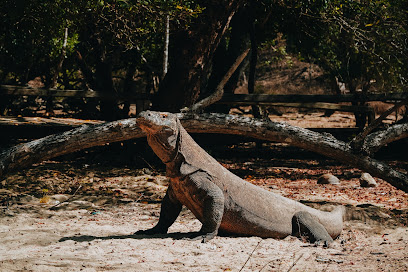
Rangko Cave
Explore the mesmerizing beauty of Rangko Cave, a stunning natural attraction in East Nusa Tenggara, Indonesia, known for its enchanting blue waters and limestone formations.

Komodo
Explore the breathtaking Komodo Island, home to the iconic Komodo dragons and stunning marine biodiversity in East Nusa Tenggara, Indonesia.

Bukit Amelia Sea Labuan Bajo
Explore Bukit Amelia Sea in Labuan Bajo: A hidden gem of stunning views, vibrant marine life, and tranquil moments in Flores.

Blue Marlin Dive Komodo
Discover the vibrant marine life and stunning landscapes at Blue Marlin Dive Komodo, your gateway to an unforgettable diving adventure in Indonesia.

Komodo Park
Explore the lush landscapes and tranquil atmosphere of Komodo Park, a beautiful green escape in the heart of Jakarta.

Loh Buaya - Rinca
Explore Loh Buaya on Rinca Island, a breathtaking destination where the majestic Komodo dragons roam free amidst stunning landscapes.

Pulau Padar
Explore Pulau Padar, a scenic island in East Nusa Tenggara with stunning landscapes, diverse wildlife, and vibrant coral reefs perfect for adventure seekers.

Manjarite Beach
Experience the tranquility of Manjarite Beach, a pristine coastal gem in East Nusa Tenggara, perfect for relaxation and adventure.

Melo Village
Explore the natural beauty and rich culture of Melo Village, a hidden gem in East Nusa Tenggara, perfect for adventurous travelers.
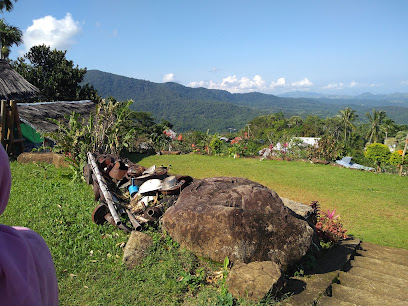
Unmissable attractions to see
Loh Buaya Komodo National Park
Explore the breathtaking Loh Buaya Komodo National Park, home to the iconic Komodo dragons and stunning natural landscapes of East Nusa Tenggara.

Puncak Waringin
Discover the stunning landscapes and vibrant sunsets at Puncak Waringin in Labuan Bajo, a must-see destination in East Nusa Tenggara.

Pink Beach
Explore the breathtaking beauty of Pink Beach, a unique destination in East Nusa Tenggara famed for its stunning pink sand and vibrant marine life.

Loh Buaya - Rinca
Explore Loh Buaya - Rinca, a stunning gem in Komodo National Park, known for its breathtaking landscapes and incredible wildlife encounters.
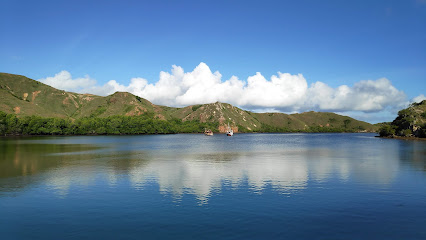
Pondok Pohon Tanjung Bunga
Explore the natural beauty and cultural richness of Pondok Pohon Tanjung Bunga in Labuan Bajo, a serene destination in East Nusa Tenggara, Indonesia.

Waecicu Beach
Discover the untouched beauty of Waecicu Beach, a stunning tropical paradise in East Nusa Tenggara, perfect for relaxation, snorkeling, and breathtaking sunsets.

MICE GOLO MORI
Explore Golo Mori, a breathtaking tourist attraction in East Nusa Tenggara, offering stunning views and access to the legendary Komodo dragons.

Dermaga Loh Liang Pulau Komodo
Explore the breathtaking beauty of Dermaga Loh Liang, your gateway to the pristine wonders of Pulau Komodo National Park and its unique wildlife.

View Point Golo Mori
Discover the breathtaking vistas of Golo Mori View Point, an unmissable attraction overlooking the spectacular Komodo National Park.

Labuan bajo Nusa Tenggara Timur
Explore Labuan Bajo, Nusa Tenggara Timur - a paradise for nature lovers and adventure seekers with stunning landscapes and rich marine biodiversity.
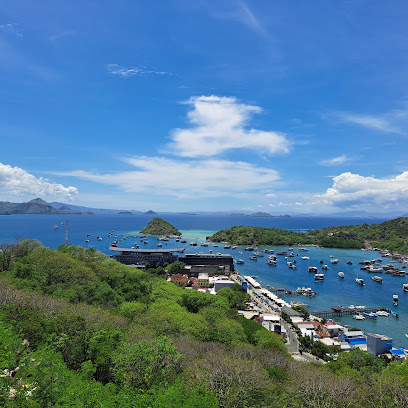
NOA View Point
Experience the stunning vistas and serene sunsets at NOA View Point, a must-visit destination in Labuan Bajo, East Nusa Tenggara.

Muara Nggoer
Experience the breathtaking beauty and rich culture of Muara Nggoer, a hidden gem in East Nusa Tenggara, Indonesia, perfect for all types of travelers.

Menara Pandang Labuan Bajo
Discover unparalleled vistas at Menara Pandang Labuan Bajo, a stunning viewpoint showcasing the breathtaking landscapes of East Nusa Tenggara's Komodo Islands.
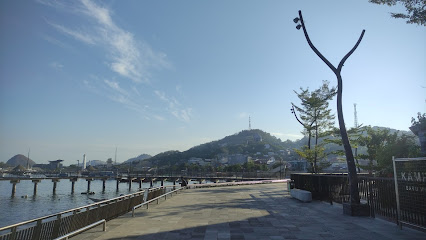
Patung Komodo Mendunia
Discover the stunning Patung Komodo Mendunia, a beautiful garden and monument celebrating the iconic Komodo dragon in East Nusa Tenggara.

Strawberry Rocks
Explore the breathtaking colors and stunning views at Strawberry Rocks in Komodo National Park, a hidden gem for nature lovers and adventure seekers.
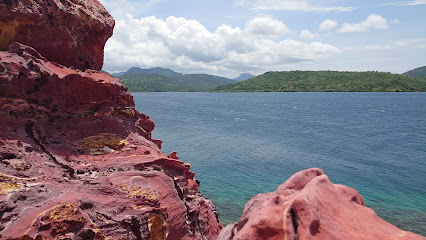
Essential places to dine
La Cucina
Experience authentic Italian cuisine at La Cucina in Labuan Bajo—savor delicious pizzas and pastas in a picturesque setting.

Happy Banana Komodo
Experience exquisite Japanese cuisine fused with organic flavors at Happy Banana Komodo in Labuan Bajo.

MadeInItaly Ristorante Italiano
Discover exquisite Italian cuisine at MadeInItaly Ristorante Italiano in Labuan Bajo – where every meal is a journey through flavors and breathtaking views.

Green Cherry
Experience culinary bliss at Green Cherry: where Italian tradition meets fresh seafood and vibrant vegetarian dishes amidst stunning Labuan Bajo views.

Artomoro Restaurant and Grill
Discover exquisite seafood delights at Artomoro Restaurant and Grill in Labuan Bajo - where local flavors meet stunning ocean views.

Baccalá
Experience exceptional seafood and Italian cuisine at Baccalá in Labuan Bajo—where every meal is a feast for your senses.

HONZEN Komodo
Experience exquisite Japanese cuisine amidst breathtaking ocean views at HONZEN Komodo in Labuan Bajo.

Hong Signature Restaurant
Experience exquisite dining in Labuan Bajo at Hong Signature Restaurant - where traditional flavors meet modern elegance.

Horny Crab Seafood Restaurant
Experience exquisite seafood dining at Horny Crab Seafood Restaurant in Labuan Bajo, where fresh catches meet stunning ocean views.

Fellas Pizzeria
Experience mouthwatering pizzas and a warm ambiance at Fellas Pizzeria in beautiful Nusa Tenggara Tim.

Pesona Bali
Discover authentic Balinese seafood at Pesona Bali in Labuan Bajo—where every meal is a taste of paradise.

Budi Luhur Restaurant
Experience authentic Indonesian cuisine at Budi Luhur Restaurant in Komodo – where taste meets breathtaking views.

Blue Corner
Experience authentic Indonesian cuisine at Blue Corner in Labuan Bajo – where every dish tells a story of tradition and flavor.

Sesto Senso Restaurant and Lounge
Experience exquisite dining at Sesto Senso Restaurant in Labuan Bajo with breathtaking views and delicious local cuisine.

Copper Bonnet Bistro & Bar
Experience the flavors of Labuan Bajo at Copper Bonnet Bistro & Bar – where local ingredients meet international cuisine in a stunning setting.

Markets, malls and hidden boutiques
Komodo National Park
Explore Komodo National Park, a UNESCO World Heritage site in East Nusa Tenggara, home to stunning landscapes and the iconic Komodo dragon.

Loh Buaya Komodo National Park
Explore the breathtaking Loh Buaya Komodo National Park, home to unique wildlife, stunning landscapes, and incredible marine life in East Nusa Tenggara.

Loh Liang - Komodo National Park
Explore the breathtaking landscapes and unique wildlife at Loh Liang, the gateway to Komodo National Park in Indonesia.

Exotic Komodo Souvenir Shop
Explore the Exotic Komodo Souvenir Shop for authentic treasures and local flavors that embody the spirit of Indonesia.

Bukit Amelia Sea Labuan Bajo
Explore Bukit Amelia Sea Labuan Bajo: A breathtaking destination rich in natural beauty, vibrant marine life, and stunning panoramic views in Flores, Indonesia.

Blue Marlin Dive Komodo
Discover the underwater wonders of Komodo National Park at Blue Marlin Dive Komodo, where adventure meets relaxation in a tropical paradise.
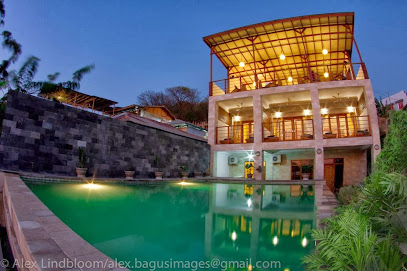
Pink Beach
Experience the breathtaking beauty of Pink Beach, where stunning pink sands and vibrant marine life create an unforgettable tropical paradise.

Uber Scuba Komodo
Explore the depths of the stunning Komodo National Park at Uber Scuba Komodo, a premier diving center offering unforgettable underwater adventures.

Loh Buaya - Rinca
Explore Loh Buaya - Rinca: A stunning natural wonder where you can encounter Komodo dragons in their pristine habitat amidst breathtaking landscapes.
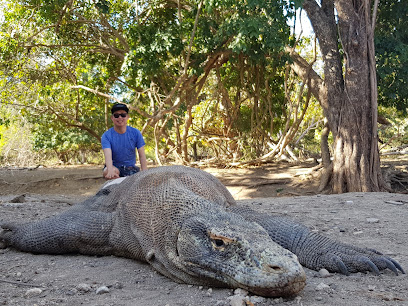
NEREN Diving Komodo - Dive in Indonesia
Experience the underwater wonders of Komodo National Park at NEREN Diving Komodo, where adventure meets marine conservation.

Dive Komodo
Explore the breathtaking underwater world of Komodo National Park with Dive Komodo, the premier dive shop in Labuan Bajo offering unforgettable diving adventures.

Manta Rhei Dive Center
Experience the underwater wonders of Komodo National Park at Manta Rhei Dive Center, where adventure meets expertise in diving.

Kado Bajo Souvenir Store
Discover unique handicrafts and souvenirs at Kado Bajo Souvenir Store in Labuan Bajo, a perfect stop for culturally rich gifts and local treasures.

Azul Komodo Dive Center
Experience unforgettable underwater adventures at Azul Komodo Dive Center, your gateway to the spectacular marine life of Komodo National Park.

Flores Spa (Raena ARK)
Experience ultimate relaxation with expert massages and local artistry at Flores Spa in Labuan Bajo, a hidden gem for tourists seeking rejuvenation.

Essential bars & hidden hideouts
Happy Banana Komodo
Experience the vibrant fusion of Japanese cuisine and organic flavors at Happy Banana Komodo, Labuan Bajo's culinary gem.

Escape Bajo (Brew, Bite, Bed)
Experience the perfect blend of culinary delight and comfortable accommodation at Escape Bajo in Labuan Bajo, East Nusa Tenggara.

Seaesta Komodo Hostel & Hotel
Discover the vibrant Seaesta Komodo Hostel & Hotel, your gateway to adventure in Labuan Bajo and the stunning Komodo National Park.

MadeInItaly Ristorante Italiano
Experience the essence of Italy in Labuan Bajo with exquisite Italian cuisine and breathtaking views at MadeInItaly Ristorante Italiano.

Paradise BAR
Experience the vibrant nightlife at Paradise BAR in Labuan Bajo, where stunning sunsets meet refreshing cocktails in a tropical paradise.

Atlantis Beach Club
Discover Atlantis Beach Club: A culinary gem on the shores of Pede Beach, where exquisite flavors meet stunning ocean views in Labuan Bajo, Flores.

Atlantis On The Rock
Experience fine dining at Atlantis On The Rock, where exquisite cuisine meets breathtaking views in Labuan Bajo, East Nusa Tenggara.

Copper Bonnet Bistro & Bar
Experience the exquisite flavors of Indonesia at Copper Bonnet Bistro & Bar, a top dining destination in Labuan Bajo.
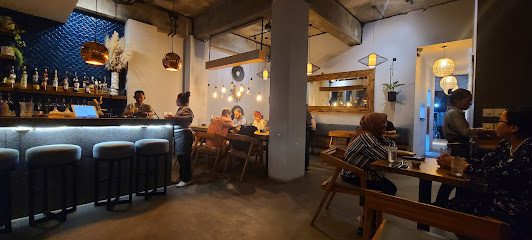
Le Bajo Flores
Experience the vibrant atmosphere, delicious cuisine, and breathtaking views at Le Bajo Flores in Labuan Bajo, a must-visit destination for travelers.
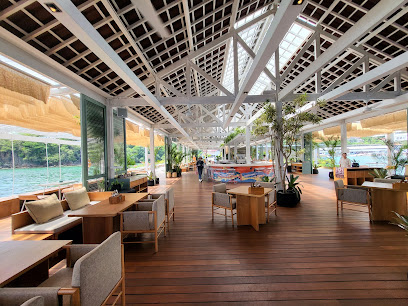
Conflict zone Bar&Resto
Discover the lively atmosphere and innovative cuisine at Conflict Zone Bar&Resto in Labuan Bajo, the perfect spot for travelers to unwind and connect.

Chill & Grill Komodo
Experience the vibrant flavors of Chill & Grill Komodo in Labuan Bajo, where culinary delights meet stunning views in a tropical paradise.

Warung Hafenblick - food & drink
Experience the vibrant atmosphere of Warung Hafenblick in Labuan Bajo, where cold beers, delicious food, and live entertainment await you.

KISIK Seafood and Grill
Experience culinary excellence at KISIK Seafood and Grill, where fresh seafood meets stunning views of Waecicu Beach in Labuan Bajo.

Mesa Lobby Lounge
Discover tranquility and elegance at Mesa Lobby Lounge, where luxury meets stunning ocean views in Labuan Bajo, Nusa Tenggara.

UNIQUE Rooftop Bar
Experience breathtaking views and exquisite cocktails at UNIQUE Rooftop Bar, the perfect destination for relaxation in Labuan Bajo.

Local Phrases about Komodo National Park
-
- HelloHalo
[ha-loh] - GoodbyeSelamat tinggal
[se-la-mat ting-gal] - YesYa
[ya] - NoTidak
[tee-dak] - Please/You're welcomeSilakan
[see-la-kan] - Thank youTerima kasih
[te-ree-ma ka-see] - Excuse me/SorryMaaf
[mah-af] - How are you?Apa kabar?
[ah-pah ka-bar] - Fine. And you?Baik. Dan kamu?
[ba-ik. dan ka-moo] - Do you speak English?Apakah Anda bisa berbicara bahasa Inggris?
[ah-pa-kah an-da bee-sa ber-bee-cha ba-ha-sa ing-gris] - I don't understandSaya tidak mengerti
[sa-ya tee-dak men-ger-tee]
- HelloHalo
-
- I'd like to see the menu, pleaseSaya ingin melihat menu, tolong
[sa-ya in-gin me-li-hat me-nu, to-long] - I don't eat meatSaya tidak makan daging
[sa-ya tee-dak ma-kan da-yang] - Cheers!Salam!
[sa-lam] - I would like to pay, pleaseSaya ingin membayar, tolong
[sa-ya in-gin mem-ba-yar, to-long]
- I'd like to see the menu, pleaseSaya ingin melihat menu, tolong
-
- Help!Tolong!
[to-long] - Go away!Pergi!
[per-gee] - Call the Police!Panggil polisi!
[pang-geel po-lee-see] - Call a doctor!Panggil dokter!
[pang-geel dok-ter] - I'm lostSaya tersesat
[sa-ya ter-se-sat] - I'm illSaya sakit
[sa-ya sa-keet]
- Help!Tolong!
-
- I'd like to buy...Saya ingin membeli...
[sa-ya in-gin mem-be-li...] - I'm just lookingSaya hanya melihat-lihat
[sa-ya han-ya me-li-hat-li-hat] - How much is it?Berapa harganya?
[be-ra-pa har-ga-nya] - That's too expensiveItu terlalu mahal
[ee-too ter-la-lu ma-hal] - Can you lower the price?Bisa kurangi harganya?
[bee-sa koo-rang-ee har-ga-nya]
- I'd like to buy...Saya ingin membeli...
-
- What time is it?Jam berapa sekarang?
[jam be-ra-pa se-ka-rang] - It's one o'clockSekarang pukul satu
[se-ka-rang pu-kul sa-too] - Half past (10)Setengah (sepuluh)
[se-ten-gah (se-pu-looh)] - MorningPagi
[pa-gee] - AfternoonSore
[so-re] - EveningMalam
[ma-lam] - YesterdayKemarin
[ke-ma-rin] - TodayHari ini
[ha-ree ee-nee] - TomorrowBesok
[be-sok] - 1Satu
[sa-too] - 2Dua
[doo-ah] - 3Tiga
[tee-ga] - 4Empat
[em-pat] - 5Lima
[lee-ma] - 6Enam
[e-nam] - 7Tujuh
[too-joo] - 8Delapan
[de-la-pan] - 9Sembilan
[sem-be-lan] - 10Sepuluh
[se-pu-looh]
- What time is it?Jam berapa sekarang?
-
- Where's a/the...?Di mana...
[dee ma-na] - What's the address?Berapa alamatnya?
[be-ra-pa a-la-mat-nya] - Can you show me (on the map)?Bisa tunjukkan (di peta)?
[bee-sa toon-jook-kan (dee pe-ta)] - When's the next (bus)?Kapan yang berikutnya (bis)?
[ka-pan yang be-ree-koot-nya (bees)] - A ticket (to ....)Tiket (ke ....)
[tee-ket (ke)]
- Where's a/the...?Di mana...
History of Komodo National Park
-
In 1910, Lieutenant van Steyn van Hensbroek of the Dutch colonial administration received reports from locals about a large, fearsome lizard inhabiting the island of Komodo. Intrigued, he organized an expedition and confirmed the existence of the Komodo Dragon (Varanus komodoensis), captivating the imagination of scientists and explorers alike.
-
Komodo National Park was established in 1980 by the Indonesian government to protect the habitat of the Komodo Dragon and support biodiversity conservation efforts. Initially, the park included the islands of Komodo, Rinca, and Padar, but later expanded to include other smaller islands and surrounding marine areas.
-
In 1991, Komodo National Park was designated as a UNESCO World Heritage Site due to its unique and significant natural value. The park's diverse ecosystems, including its terrestrial and marine environments, were recognized for their global importance in terms of biodiversity and conservation.
-
The islands within Komodo National Park are home to several indigenous communities who have lived in harmony with the environment for centuries. These communities have rich cultural traditions and practices that are closely tied to the land and sea, including traditional fishing methods and rituals honoring the Komodo Dragon.
-
Over the years, Komodo National Park has faced various conservation challenges, including habitat degradation, illegal fishing, and tourism pressures. In response, numerous conservation initiatives have been undertaken, such as strict park regulations, community engagement programs, and international partnerships aimed at preserving the park's natural heritage.
Komodo National Park Essentials
-
Komodo National Park is located in the Lesser Sunda Islands in Indonesia. The closest airport to the park is Komodo Airport in Labuan Bajo, on the island of Flores. You can fly to Komodo Airport from major Indonesian cities such as Jakarta, Bali (Denpasar), and Surabaya. From Labuan Bajo, you can take a boat to the park. Several tour operators offer boat trips to the islands of Komodo, Rinca, and Padar.
-
Within Komodo National Park, the primary mode of transportation is by boat. Local boat operators and tour companies offer a range of options, from day trips to multi-day liveaboard experiences. In Labuan Bajo, taxis and motorbike rentals are available for getting around town. For exploring the islands themselves, be prepared for hiking and walking, as motorized transportation is limited on the islands.
-
The official currency in Indonesia is the Indonesian Rupiah (IDR). While credit cards are accepted in some hotels and restaurants in Labuan Bajo, it's advisable to carry cash for transactions within the park and smaller establishments. ATMs are available in Labuan Bajo, but it is wise to withdraw sufficient cash before heading into the park, as there are no banking facilities on the islands.
-
Komodo National Park is generally safe for tourists, but it's essential to take standard precautions. Be aware of your surroundings and avoid isolated areas, especially at night. Petty theft can occur, so keep your belongings secure. When hiking, stay on designated trails and follow ranger instructions to avoid encounters with dangerous wildlife, such as Komodo dragons. There are no specific high-crime neighborhoods targeting tourists, but vigilance is always advised.
-
In case of an emergency, contact the local authorities or park rangers immediately. The emergency number in Indonesia is 112. Labuan Bajo has medical facilities, including Siloam Hospital, which can handle most medical issues. For serious emergencies, evacuation to a larger city may be necessary. Make sure to have travel insurance that covers medical emergencies and evacuation. Carry a basic first-aid kit and any necessary medications.
-
Fashion: Do wear light, breathable clothing suitable for tropical climates. Avoid wearing revealing clothing, especially in more traditional areas. Religion: Do respect local customs and dress modestly when visiting religious sites. Public Transport: Do use reputable boat operators for safety. Don't assume all boats are well-maintained; check reviews and safety records. Greetings: Do greet locals with a smile and a slight nod. A simple 'hello' (salam) or 'thank you' (terima kasih) goes a long way. Eating & Drinking: Do try local dishes and seafood. Don't drink tap water; always opt for bottled or purified water.
-
To experience Komodo National Park like a local, engage with local guides and boat operators who can offer unique insights into the park's biodiversity and culture. Visit the local markets in Labuan Bajo for fresh produce and handcrafted souvenirs. Early morning hikes offer the best wildlife viewing opportunities and cooler temperatures. Don't miss snorkeling or diving in the park's rich marine environments; some of the best spots include Batu Bolong and Manta Point.
Trending Landmarks in Komodo National Park
-
AYANA Komodo Waecicu Beach
-
Pink Beach
-
Loh Buaya Komodo National Park
-
Mirror Stone Cave
-
MUSEUM KOMODO - JAGAT SATWA NUSANTARA
-
Loh Liang - Komodo National Park
-
Rangko Cave
-
Komodo
-
Bukit Amelia Sea Labuan Bajo
-
Blue Marlin Dive Komodo
-
Komodo Park
-
Loh Buaya - Rinca
-
Pulau Padar
-
Manjarite Beach
-
Melo Village
Nearby Cities to Komodo National Park
-
Things To Do in Bali
-
Things To Do in Suai
-
Things To Do in Bobonaro
-
Things To Do in Ermera
-
Things To Do in Gleno
-
Things To Do in Aileu
-
Things To Do in Dili
-
Things To Do in Same
-
Things To Do in Surabaya
-
Things To Do in Baucau
-
Things To Do in Lospalos
-
Things To Do in Balikpapan
-
Things To Do in Yogyakarta
-
Things To Do in Semarang
-
Things To Do in Manado










